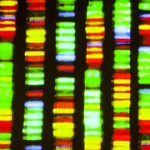
Cergios / shutterstock.com
Type I interferon appears to play a role in disease susceptibility and pathogenesis in several classic connective tissue diseases, at least in some patients. Below, I present evidence supporting this connection, explore potential missing links in pathogenesis and discuss biological treatments that target the pathway.
The Type I Interferon Pathway
Interferons are a class of cytokines thought to play important roles in immunity, autoimmunity, inflammation and cancer. Each of the three subtypes of interferon triggers a distinct receptor complex. Type I interferons all send their signals via the type I interferon receptor (IFNAR). Interferon-α and interferon-β are the two type I interferons most studied in rheumatic diseases, but three other subtypes also exist. Though interferon-α and interferon-β signal via the same receptor, their binding permits different downstream signaling. Once triggered, IFNAR can activate kinases, such as Janus kinase 1 and tyrosine kinase 2, ultimately leading to the expression of different gene programs.1
The main producers of interferon-α are plasmacytoid dendritic cells. In contrast, many different cell types produce interferon-β, including fibroblasts, epithelial cells, dendritic cells and phagocytes. The production of type I interferon is highly dependent on cell type and specific environmental circumstances. For example, type I interferon production might be initiated after toll-like receptors detect local microbial products, partly mediated through a family of transcription factors called interferon regulatory factors. These factors also help modulate the effects of type I interferon on target cell gene expression.1,2
Elevated Activity in Rheumatic Disease
A 1979 study first noted elevated interferon activity in the blood of lupus patients, as well as in scleroderma, Sjögren’s syndrome and rheumatoid arthritis. The lupus findings were particularly robust.3

Dr. Niewold
Timothy Niewold, MD, is the director of the Colton Center for Autoimmunity and the Judith and Stewart Colton professor of medicine at NYU School of Medicine in New York City. He notes that type I interferon has anti-viral activity: “It’s interesting, because some of the features of lupus, like the myalgias and the fatigue, are similar to those observed in a viral infection.”
Dr. Niewold says it wasn’t clear what to do with this information, and interest in the topic lagged. Part of the reason was the difficulty of the tests used to measure type I interferon. He notes, “It has been hard to reliably measure protein levels of type I interferon in human blood. For high levels, standard methods seem to work well, but when you get to more subtle determinations, most of the assays have been tricky. There aren’t really good commercially available tests for type I interferon.”
More studies might have included this measure over the years if the test had not proved so challenging to perform.
Interferon Signature
A renaissance of interest in the type I interferon pathway occurred in the 2000s, when technology became available that could study gene expression patterns. “There was an ‘interferon signature’ in many patients with lupus,” explains Dr. Niewold. “They call it a ‘signature’ because what you are seeing is the response to interferon in the blood cells, where it looks like the interferon receptor has been ligated, and you can observe the downstream events. You see the messenger RNA transcripts that you would expect after a type I interferon receptor is engaged.” In other words, one saw upregulation of type I interferon-stimulated genes. “It jumped off the page in lupus,” he adds.
Other studies soon followed. Shervin Assassi, MD, is an associate professor in rheumatology at the University of Texas Health Science Center in Houston. He notes, “When we look at the gene expression profile in peripheral blood of patients with systemic sclerosis, we detect that the most prominently dysregulated profile is an upregulation of interferon I gene expression. We see similar findings to a lower degree when we look at tissue level, such as in the skin.” An interferon signature is also commonly found in samples taken from Sjögren’s patients, and literature documents high levels of type I interferon in both pediatric and adult dermatomyositis.
Similarities exist among many of the conditions that show increased type I interferon response. “A lot of them are classic connective tissue diseases—lupus, Sjögren’s, scleroderma, myositis. They are unified by anti-nuclear antibodies as well,” says Dr. Niewold. He adds, “This raises more questions than it answers. We have this diverse group of ANA-positive diseases that have many different physical manifestations but some similarities in autoantibodies. Why are they all related to type I interferon?”
Phenotype, Severity & Autoantibodies
Not all patients with these diseases display interferon signatures indicative of high interferon I activity. “Several studies have shown that not all systemic sclerosis patients have the interferon signature,” explains Dr. Assassi. “It’s thought to be positive in around half of them.” Similarly, around half of lupus patients have elevated type I interferon levels. In other words, type I interferon is probably not an important pathogenic factor for all patients with these diseases.1
“An interferon signature does appear to be associated with more severe lung disease and more severe skin disease in systemic sclerosis,” says Dr. Assassi. In Sjögren’s syndrome, an interferon signature identifies patients with higher levels of disease activity.1
Dr. Niewold says elevated type I interferon levels probably indicate a subset of a sicker group of patients with lupus. “If you look at a large group of patients and you measure disease activity, the people that have high interferons will tend to have higher disease activity than the group that doesn’t,” he says. These patients are also more likely to have kidney, central nervous system or hematological involvement.
However, the correlation with type I interferon is not as strong if one looks at the individual lupus patient and their disease activity over time. Dr. Niewold explains, “You can find patients who always have high interferons, and their disease flares can come and go without change in interferon. You can also find patients who seem to always have low levels, and it might be that interferon is just not part of their disease. It does seem like interferon levels fluctuate in a subgroup of lupus patients, but it hasn’t been useful as a major predictor of disease activity.”
In contrast, several studies have demonstrated that type I interferon correlates with muscle enzyme levels in inflammatory myositis, suggesting that elevated type I interferon might play more of a role in flare activation in that condition.1
Interferon Signature & Rheumatic Antibodies
High type I interferon activity seems to be associated with positivity of certain autoantibodies as well. “Type I interferon has been associated with autoantibodies, like the anti-Ro and anti-La antibodies in Sjögren’s syndrome and lupus—patients who have those autoantibodies are more likely to have an interferon signature than those who don’t,” says Dr. Niewold. In myositis, a similar correlation has been found between anti-RNA binding protein antibodies (such as anti-Ro).1

Dr. Assassi
Dr. Assassi notes that one of the antibodies associated with the interferon signature in systemic sclerosis is anti-RNP, an antibody with strong overlap with other mixed connective tissue diseases, such as lupus and dermatomyositis. He says, “Another antibody associated with an interferon signature is anti-topoisomerase, which is associated with the diffuse type of disease and worse lung involvement.”
Interestingly, certain autoantibodies are specifically associated with the absence of a type I interferon signature, such as RNA polymerase 3. “This antibody is associated with diffuse cutaneous involvement, but it is rarely associated with extensive pulmonary fibrosis,” says Dr. Assassi. “That might tell us something about the pathogenesis. It’s a puzzle why this antibody exposes our patients to so much skin involvement but not much lung fibrosis.”
Genome Screening
Another critical line of evidence pointing to the pathogenic role of type I interferon emerged in the first decade of the 21st century. New technological advances allowed high-resolution, genome-wide screenings for the first time. This enabled researchers to identify genetic variants of specific genes that increased the risk of these diseases.
“When you look at the list of genes, definitely in lupus but in some other diseases too, many type I interferon pathway genes were associated with disease,” says Dr. Niewold. “These studies surveyed the entire genome; they weren’t just looking at interferon-related genes. So the over-representation of interferon pathway genes means this pathway is involved in disease susceptibility.”
Dr. Assassi adds, “There are several hits in the interferon pathway that emerged from the genome-wide genetic studies that are involved in the susceptibility to systemic sclerosis, including interferon regulatory factors 5, 7 and 8.”
Dr. Niewold says researchers have identified several overlaps between the interferon-related genes that seem to increase the risk of lupus, systemic sclerosis, Sjögren’s syndrome and inflammatory myositis. “This makes you wonder if interferons could be generally predisposing to a number of different autoimmune diseases. Maybe after the interferon pathway is activated, then other genetic and environmental factors send you down a more specific road to either lupus, scleroderma or Sjögren’s syndrome,” he says. These genetic variations linked to autoimmune disease have generally been gain-of-function type allelic variations—gene variations that lead to hyperactivity of the type I interferon pathway.
‘Are interferons more important early on, when the immune system is starting to break tolerance?’ —Dr. Niewold
Other Evidence
Other lines of evidence also support the idea of the pathogenic role of type I interferon. Dr. Assassi says, “There are case reports of patients who receive interferon-α or interferon-β for other indications who subsequently developed systemic sclerosis.”
Type I interferon, an antiviral molecule, has often been given to treat viral hepatitis. “In this group of patients, a number of people developed lupus or other autoimmune conditions,” Dr. Niewold says. “When you withdrew the type I interferon, typically most of the symptoms would go away.” This serves as additional evidence that type I interferon plays a causal role in human autoimmune disease.
Dr. Niewold says some of these patients were anti-nuclear antibody (ANA) negative prior to treatment, but then had a positive test after they received type I interferon. “I don’t think we quite understand all the steps on the way, but there seems to be a strong association between interferon and ANA-positive disorders. It’s interesting that even in the non-autoimmune individuals treated with interferon, you could see the ANA switch from negative to positive.”
In scleroderma, a randomized controlled clinical trial of interferon-α in humans has also been performed. This was justified based on earlier in vitro work showing that interferon-α might be anti-fibrotic. Dr. Assassi explains, “That study had to be prematurely stopped because patients who were receiving interferon-α had worsening lung function and less improvement in skin involvement.”4 Additionally, a great deal of evidence from both in vitro and in vivo studies in mouse models supports the pathogenic role of type I interferon in these diseases.1,2
Missing Links in Pathogenesis
Researchers still have many unanswered questions about both the upstream drivers of increased type I interferon and the downstream mechanisms by which it impacts disease initiation and propagation. As Dr. Assassi notes, “There is still a lot of work left to connect the interferon signature to fibrosis, the hallmark of systemic sclerosis.”
Dr. Niewold explains that in lupus, autoantibodies usually appear first. Asymptomatic patients with autoantibodies don’t have high levels of type I interferon. But type I interferon levels appear to rise dramatically in the two years before patients become ill. “That’s really exciting for us in rheumatology, because it might suggest a window where you could do something, if you had the right intervention,” he says.
Questions remain about when exactly the impact of type I interferon might be most important. Dr. Niewold asks, “Are interferons more important early on, when the immune system is starting to break tolerance? Or is interferon important in later disease as well? I think both are very possible.” Such questions would have direct relevance to treatment timing, if drug targets to the type I interferon pathway were successfully developed.
Therapeutic Targets
Several biologic drugs that directly target the pathway have been studied in clinical trials. Thus far, the outcomes of these studies have been mixed. “I wouldn’t say these studies are negative, but unfortunately you also can’t say that they are overly positive,” says Dr. Niewold.
Rontalizumab (studied in lupus) and sifalimumab (studied in lupus, myositis and psoriasis) are both antibodies against type I interferon-α.1 Dr. Niewold discusses the thinking behind blocking interferon-α alone. Less evidence was available that interferon-β was important for lupus, especially at the time the drugs were being developed.
“I think a lot of us felt that if you could get away with just blocking interferon-α, maybe that’s good,” he says. “You don’t knock out the positive effect of type I interferon on immunity so much, and maybe you would have a better response to viruses. Then when it looked like each of the anti-interferon-α antibodies were not effective enough, I think more of us thought it was worth trying to block the receptor.”
In contrast to the type I interferon-α antibodies, the biologic treatment anifrolumab is designed to block all signals through the IFNAR receptor. Anifrolumab performed quite strongly in phase 2 studies of lupus, both in terms of safety and efficacy, and many in the rheumatology community were hoping to see positive phase III trials.5 Disappointingly, in August 2018 AstraZeneca announced that TULIP 1, its phase 3 trial of the drug in patients with moderate to severe lupus patients, failed to meet its endpoint. Results of a second phase 3 study (TULIP 2) should be released sometime in 2019, as should more detailed results about the failed trial, TULIP 1.
Dr. Niewold says a path to drug approval may still be possible if TULIP 2 has positive results. “Usually, with that good of a phase 2 you should have a pretty good chance of having a successful phase 3. So it is surprising, and I think at this point we mostly have questions.” He notes that lupus trials can be difficult to perform for a number of reasons; finding ways to better select patients or design trials might be key.
Most of the drug trials have demonstrated that patients with a higher interferon signature tend to respond to treatment, Dr. Niewold says, which is a hopeful sign. “Everyone’s trying to sort out how much of this is trial design, whether the right patients got enrolled, or maybe the target is more complicated that we think. Or do we have to do it in a different way, [such as] blocking something else along with type I interferon?”
The need for new treatments in lupus is acute. He adds, “Even if it looked like only a subset of patients could be helped by a new medication, it would be a very useful tool to have in the toolbox.”
Anifrolumab has also been studied in systemic sclerosis in a promising phase 1 trial from 2014.6 However, Dr. Assassi believes identifying well-developed inclusion criteria for these studies is a necessary next step if we are to develop drugs that might help only a subset of patients. “At the clinical level, we need to better understand the role of RNA interferon signature or serum interferon inducible chemokines for predicting outcome,” he explains. “We also need to identify patients who are more likely to benefit from interferon blockade, so when we use drugs like anifrolumab, the clinical trials have the best chance to succeed.”
Ruth Jessen Hickman, MD, is a graduate of the Indiana University School of Medicine. She is a freelance medical and science writer living in Bloomington, Ind.
References
- Muskardin TLW, Niewold TB. Type I interferon in rheumatic diseases. Nat Rev Rheumatol. 2018 Mar 21;14(4):214–228.
- Skaug B, Assassi S. Type I interferon dysregulation in systemic sclerosis. Cytokine. 2019 Jan 23. pii: S1043-4666(19)30006–7.
- Hooks JJ, Moutsopoulos HM, Geis SA, et al. Immune interferon in the circulation of patients with autoimmune disease. N Engl J Med. 1979 Jul 5;301(1):5–8.
- Black CM, Silman AJ, Herrick AI, et al. Interferon-alpha does not improve outcome at one year in patients with diffuse cutaneous scleroderma: Results of a randomized, double-blind, placebo-controlled trial. Arthritis Rheum. 1999 Feb;42(2):299–305.
- Furie R, Khamashta M, Merrill JT, et al. Anifrolumab, an anti-interferon-α receptor monoclonal antibody, in moderate-to-severe systemic lupus erythematosus. Arthritis Rheumatol. 2017 Feb;69(2):376–386.
- Goldberg A, Geppert T, Schiopu E, et al. Dose-escalation of human anti-interferon-α receptor monoclonal antibody MEDI-546 in subjects with systemic sclerosis: A phase 1, multicenter, open label study. Arthritis Res Ther. 2014 Feb 24;16(1):R57.



